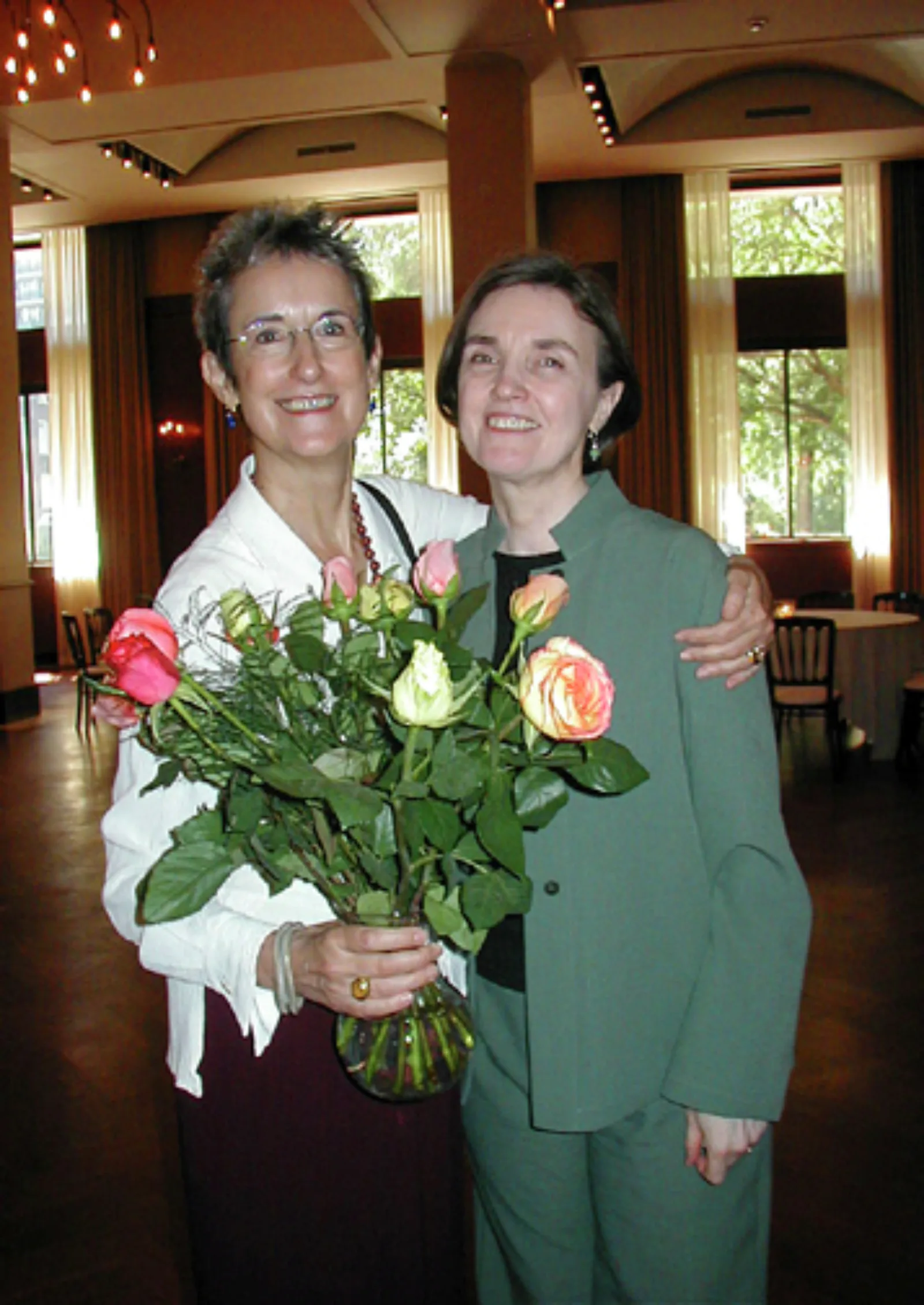When Mary Porter Wyly retired from the Newberry in 2003 after twenty-eight years of service, her colleagues assembled a keepsake album of photographs and messages composed for the occasion. Notes and letters came from longtime workers still at the Newberry as well as retired ones, from newly hired staffers, and from former colleagues who had gone on to positions of leadership at other institutions nationwide. The album is a precious document of a career spent advocating for the Newberry’s core mission. Almost all the contributors remarked on Mary’s personal influence on their careers. Mary Wyly was a major figure nationally and locally, and she touched many dozens of Newberry lives, always for the better.
Some themes in that album appear over and over. Mary was possessed of “creativity, resourcefulness, grace, and savvy” and of boundless energy, what one called her “cheerful relentlessness.” Her laugh was frequent and contagious, but she was “always thoughtful,” paying sensitive attention to anyone with a question or a problem. Many staffers described her as a mentor, who taught them to be a serious professional without being over-earnest. A remarkable number also mentioned her style—her scarves, haircuts, shoes, truculent opinions about lipstick. She bucked a casual-dress trend in the library world by promoting informal “dress-up” Fridays; but she happily tolerated the fact that some of us looked like slobs.
Of course, those who knew her professionally cited major accomplishments. Mary’s first assignment was as Assistant for Institutional Planning, responsible for coordinating the work on the new stacks building, which opened in 1981, and the top-to-bottom renovation of the 1893 Cobb building, which was completed in 1985. By the time all that was done, she had been promoted twice, eventually taking the role of Deputy Director for Library Services. She revised staffing policies to put most employees on full-time contracts with benefits, replacing the hodge-podge of hourly hires that had been typical for years. She got the Newberry involved in regional and national consortia for library and archival services. She threw herself wholeheartedly into two capital campaigns. She put computers and e-mail in every office. She encouraged online cataloging so that new Newberry records would appear in national and international databases. And she began a two-decade campaign to convince the trustees that the entire catalog needed to be online, like those of most other American research libraries. That $2 million recon project was still in progress when she retired but getting it off the ground was largely to her credit. Moreover, in the wake of the renovation projects she oversaw, Mary built a talented team that could consolidate and carry forward all these projects.
Perhaps Mary’s most important trait was optimism and concomitant good humor. A common adjective in the testimonials to her is “calm,” which is amazing considering how much turmoil the library endured during her time. Even when she was exasperated, she remained positive about the potential outcome of whatever kerfuffle was afoot. Her rare expressions of anger (as often as not directed at overdemanding scholars like myself) always came with constructive criticism, and usually with an olive branch in the form of extraordinary, rule-bending service. She wanted the Newberry collections to be known and used by serious readers and she never wanted to be a naysayer when it came to public service. To this day, visitors remark on the high level of public services at the Newberry. I, for one, credit Mary Wyly for making that tradition of service so strong that it is still our pride some two decades after her retirement.
Mary and her husband, Jim, retired to Oaxaca, Mexico, in 2003, where they built a new life immersed in the music and art of that city. They happily welcomed visitors from their old lives up north, but they never returned to the States. Jim died in late 2023, and Mary survived to see a major retrospective of his paintings, no small satisfaction for a retirement well-spent.
